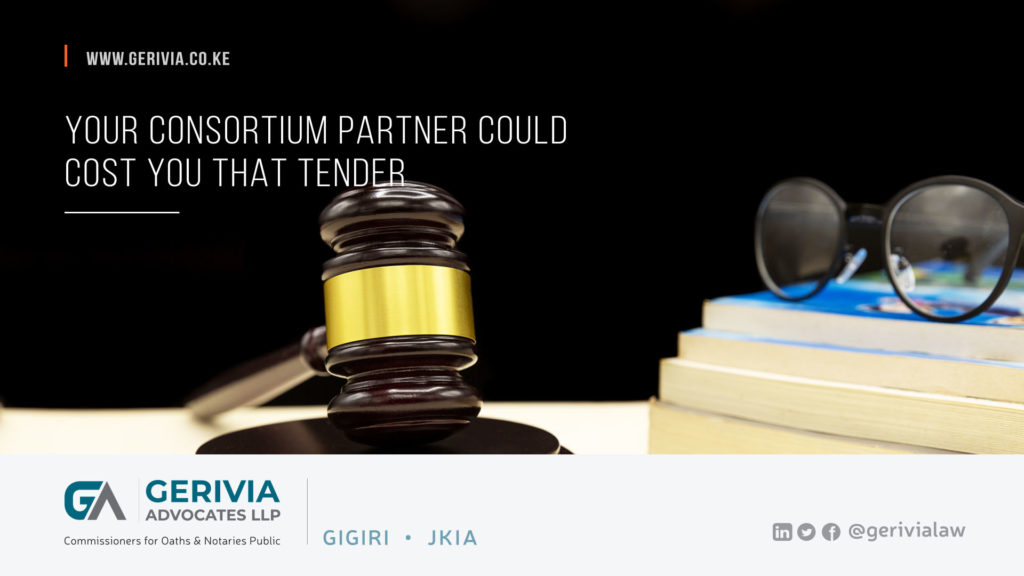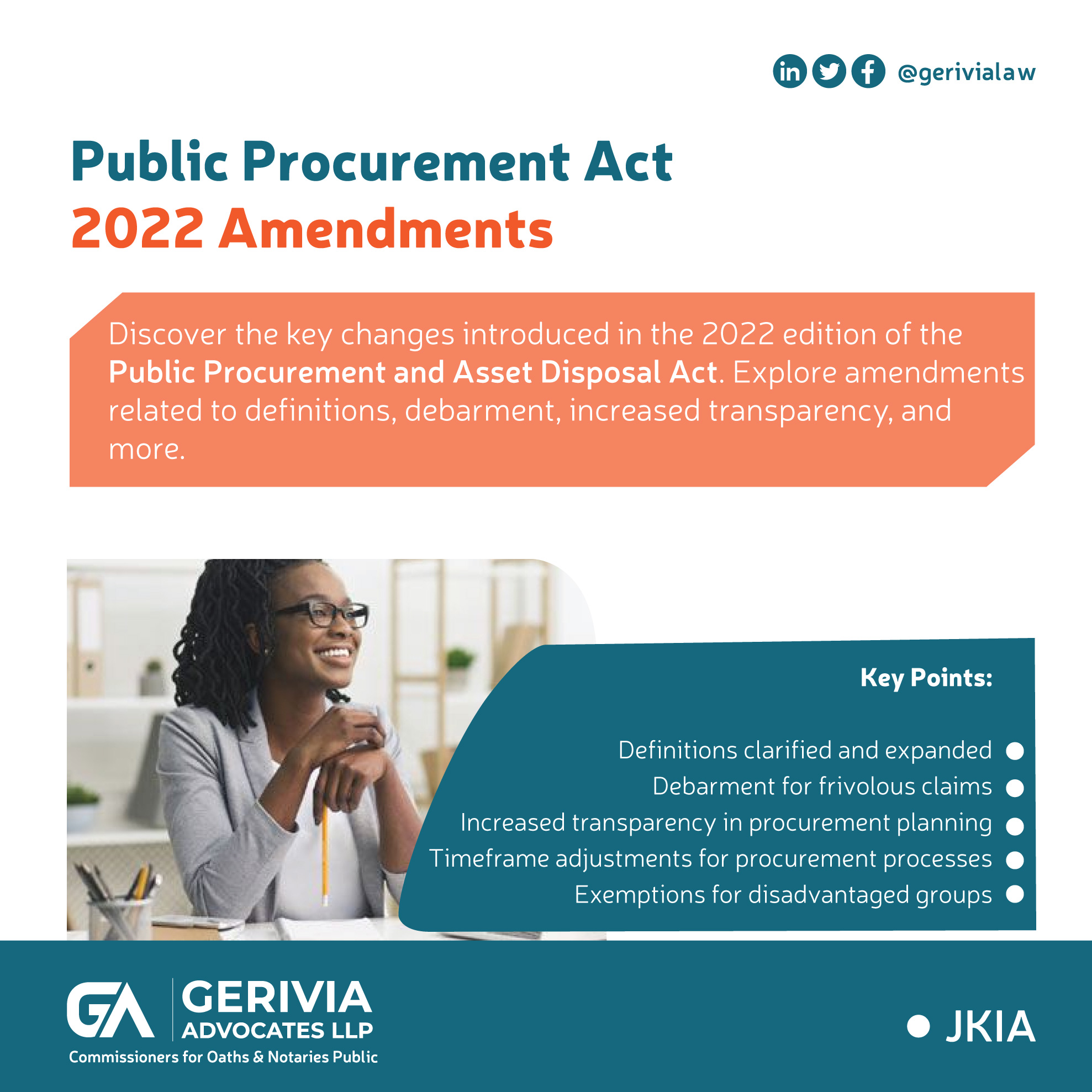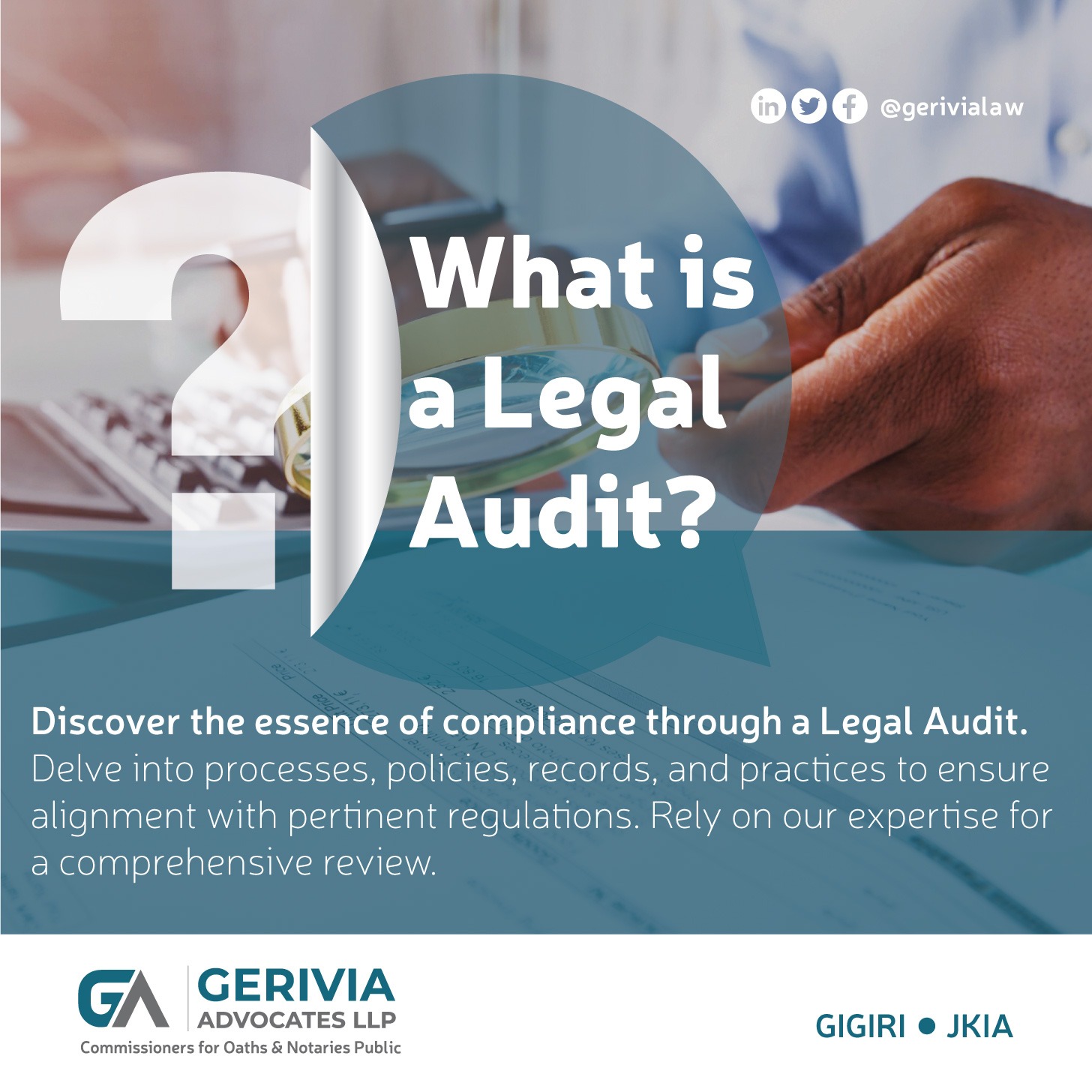The High Court has held that:
“It is true that ADK Technologies Limited and Transnational Technologies Limited came together at some point for purposes of bidding for a tender floated by the 2nd interested party; but they came together as a consortium for that particular purpose and not as merger in which they would be deemed to have lost their corporate identity. They were and still are two distinct and separate legal persons whose individual actions cannot possibly bind each other except as provided in the consortium agreement. And a consortium agreement is an agreement because the parties that comprise it are at consensus at idem; the moment they take diametrically opposite positions on any particular issue that brought them together, the consortium or agreement is rendered impotent”.
The High Court further held that:
“But even if such a consortium exists, neither of the parties can approach the court as a “consortium” not least because this court is not subject to whatever tender rules that there may have been and to which the consortium subscribed. It is governed by law and procedures which also bind parties approaching it for a remedy because of one grievance of the other”.
Case
Administrative Review Proceedings before the Public Procurement Administrative Review Board (PPARB)
ADK Technologies Limited (ADK) and Transnational Computer Technology Limited (TCT) formed a contractual consortium for purposes of submitting a bid in response to a Tender for provision of onsite support for IFMIS. The consortium submitted its bid and after evaluation was concluded, its bid was declared unsuccessful.
ADK, as the lead bidder, accepted, in writing, the results of the evaluation and even requested the procuring entity to release its original bid bond. TCT on the other hand was aggrieved by the decision of the procuring entity declaring its bid unsuccessful and filed review proceedings before the Public Procurement Administrative Review Board (PPARB/Review Board).
Preliminary objections were filed by the procuring entity and the successful bidder who were contesting TCT’s authority to file review proceedings without authority from ADK to sue, plead & act on its behalf. The description of the parties suing contained both parties to the consortium.
Interestingly, ADK also filed pleadings before the PPARB and informed the Review Board that it had not authorized TCT to sue, plead or act on its behalf. ADK even attempted to withdraw the review proceedings.
PPARB held that the request for review application was not properly filed before it, noting that there was no evidence provided of authorization to file the request for review on behalf of ADK who was named as an applicant. [See PPARB Application No. 18/2021 ADK Technologies Limited in consortium with Transnational Computer Technology Limited vs The Accounting Officer, the National Treasury & 2 Others- http://ppra.go.ke/arb-decisions/].
Judicial Review Proceedings before the High Court
Dissatisfied with the outcome of the proceedings at the PPARB, TCT instituted judicial review proceedings at the High Court of Kenya. Once again, a preliminary objection was filed by the successful bidder, Kingsway Business Systems Limited, on the grounds that the judicial review application filed by TCT was fatally defective for want of proper authority to plead or act from ADK.
ADK, which company had also been named as an applicant in the judicial review application filed pleadings at the High Court opposing the application filed by TCT.
ADK also pleaded before the High Court that it was never informed of the intention to file the proceedings, it did not file the judicial review proceedings and it did not want to be part of the judicial review proceedings.
The High Court held that ADK & TCT can only sue together for a common cause but as separate and distinct entities. Subject to the terms of their agreement, none of them can purport to act on behalf of the other without the other’s authority or consent.
The High Court struck out the application for being bad in law and an abuse of the court process. [HCJR/E027/2021 Republic vs Public Procurement Administrative Review Board & 3 Others Ex-parte ADK Technologies Limited in consortium with Transnational Computer Technologies Limited [ http://kenyalaw.org/caselaw/cases/view/210598/].
Case Analysis
In the eyes of the law, a consortium has no legal persona. A consortium that is embodied in a consortium/joint venture agreement, is not a legal person with existence in law and thus cannot sue/institute legal proceedings.
This was the Court’s position in The Fort Hall Bakery Supply Co. v Fredrick Muigai Wangoe [1959] E.A 474, cited with approval in Housing Finance Company of Kenya Ltd v Embakasi Youth Development Project [2004] eKLR.
One bidder in a consortium cannot (without express written authorization) institute review proceedings before the PPARB or any other court and purport to obtain relief for the other bidder who is a party to the request for review in name only and/or seemingly under protest.
Order 1 Rule 13 of the Civil Procedure Rules 2010 embodies a principle; which principle is important for all bidders who elect to bid in consortium.
The principle is thus, where there are more litigants than one, one of them may be authorized by others to appear, plead or act on their behalf. But such authority must be in writing and must be signed by the party or parties giving it, and must be filed. Filing of the authority is particularly important since it is the only way, that the Court/Tribunal will know that the other party/ (ies) have given the one before Court/Tribunal, the authority to appear, plead or act for them.
The principle embodied in Order 1 Rule 13 Civil Procedure Rules has been applied even in judicial review proceedings. It is important to remember that a consortium or unincorporated joint venture entered into for purposes of submitting a bid/proposal to a procuring entity is limited only for this purpose.
The consortium does not constitute a merger in which individual members of the consortium would be deemed to have lost their corporate identities. The Court in HCJR/E027/2021 Republic vs Public Procurement Administrative Review Board & 3 Others Ex-parte ADK Technologies Limited in consortium with Transnational Computer Technologies Limited stated:
“…but they came together as a consortium for that particular purpose and not as a merger in which they would be deemed to have lost their corporate identity. They were and still are two distinct and separate legal persons whose individual actions cannot possibly bind each other expect as provided in the consortium agreement and a consortium agreement is an agreement because the parties that comprise it are at a consensus at[ad?] idem; the moment they take diametrically opposite positions on any particular issue that brought them together, the consortium or agreement is rendered impotent”.
It is also important to note that although a tender document may allow bidders to bid as a consortium and even require that they annex their consortium/joint venture agreement, the PPARB and the Courts are not bound to these kind of tender requirements that bidders may have submitted themselves to.
What you need to know about consortium bidding
A consortium in this context is two or more contractors/suppliers coming together to bid collectively during a procurement process. There is no limit to the number of members that may be in a consortium and consortia bidding is welcome, even in Kenya.
Contractors/suppliers usually bid as a consortium:
- When they take the view that they could collectively put in a stronger bid;
- When individually a contractor/supplier is not able to meet all of the relevant requirements of the Tender Document, but believes it can, collectively with other contractors/suppliers;
- When there is a portion of works or services that may need to be done by a local partner. For instance, where an international company may supply lifts for a building but the said lifts will be maintained by a local partner; and
- Where it is so required by law mainly to facilitate participation of citizen contractors or to enable transfer of technology.
More often than not, members of a consortium may need to appoint a lead contractor/supplier as a lead contact to complete the bid on behalf of all of the consortium members.
Some Tender Documents may go as far as specifying who should be the lead bidder e.g. the local contractor or the contractor in charge of certain components of the bid such as the manufacturer etc.
What authorisation does the lead supplier require from other consortium members?
The lead contractor/supplier must be authorised in writing by each of the other members of the consortium to:
- provide the responses to the requirements of the Tender Document;
- submit the bid/proposal to the Procuring Entity on behalf of the consortium;
- receive correspondences from the Procuring Entity on behalf of the consortium; and
- sign the contract (in the event of an award).
These authorizations take many forms including letters of authorizations and powers of attorney. They are however not to be confused with the contents of a consortium or joint venture agreement which is an agreement between members of a consortium which covers, among other things:
- the role of each member;
- each members’ responsibilities;
- risk, resource allocation;
- cost allocation; and
- the overall bidding approach agreed, including which member is the lead bidder.
A word of caution to bidders- do not just take a template of a joint venture/consortium agreement and change names of the parties and proceed to sign it. Go to an advocate who is familiar with public procurement and discuss exactly what you want out of your joint venture/consortium arrangement and allow the advocate to draft an agreement that suits your arrangement.
It should always be remembered that bidding as a consortium is typically based on co-operation, information exchange and coordination of capacity by its members. A consortium is not established on a lasting basis.
Have you ever spotted the following in a Tender Document? (Note: Samples have been extracted from Tender Documents issued by various procuring entities in Kenya with necessary modifications)
Sample 1: The Bidder shall state/nominate the name(s), cellphone contacts and address of his representative(s) who is/are authorized to sign bids and receive on his behalf the correspondences in connection with the Bid. This nomination shall be evidenced by submitting of a power of attorney signed by legally authorized signatories of all the partners/directors/owners of the bidding entity, witnessed and notarized by a Notary Public
Sample 2: FORMAT OF POWER OF ATTORNEY
We …………………………………. (name and address of the registered office) do hereby constitute, appoint and authorize Mr. / Mrs. / Ms ……………………………… (name and residential address) who is presently employed with us and holding the position of ………………………. as our attorney, to do in our name and on our behalf, all such acts, deeds and things necessary in connection with or incidental to our proposal for the project/goods/works/services “………………………………………………………………….”, including signing and submission of all documents and providing information / responses to the …………………..(name of Procuring Entity), representing us in all matters before ……………………(name of the Procuring Entity), and generally dealing with ………………..(name of the Procuring Entity) in all matters in connection with our proposal for the said project/goods/works/services. We hereby agree to ratify all acts, deeds and things lawfully done by our said attorney pursuant to this Power of Attorney and that all acts, deeds and things done by our aforesaid attorney shall and shall always be deemed to have been done by us.
………………………………………………..….. (Signature)
(Name, Title and Address)
Accepted
………………………………………………..….. (Signature)
(Name, Title and Address of the Attorney)
I selected these particular samples since a procuring entity will either request a bidder to submit a signed Power of Attorney (as under Sample 1) or provide bidders with a template/format to adopt (as under Sample 2).
Ultimately, the procuring entity wants bidders to identify the person/persons authorized to sign and submit bids/proposals, receive correspondences and respond to queries from the procuring entity.
Indeed, most of the powers of attorney/letters of authorization (whatever the name used), included by bidders in their bids restrict themselves to authorizing an attorney to sign and submit a bid/proposal to a procuring entity.
In some cases, an attorney is also authorized to sign the contract (in the event of an award).
Do you know that there are rights you may need to enforce as a consortium post bid submission, particularly after tender award?
After tender evaluation, the consortium may be awarded the tender. The consortium could also be unsuccessful. In the event that the consortium is successful, it may be required to defend proceedings filed by an unsuccessful tenderer before the PPARB under Section 167 (1) of the Public Procurement and Asset Disposal Act (“the Act”).
Conversely, the consortium (whether successful or unsuccessful), may elect to file proceedings before the PPARB where there is a breach of the provisions of the Act.
For purposes of this Article and the message I intend to convey, let us assume the consortium, having been declared unsuccessful, wants to file request for review proceedings before the PPARB.
A representative of the consortium may elect to prepare the Request for Review accompanied by the Statement in Support of the Request for Review. The representative may also elect to instruct an Advocate or a firm of Advocates to file the application.
The application will be filed and the PPARB will notify the procuring entity of the suspension of the procurement proceedings and all other bidders who participated will be notified of the application and be invited to submit responses.
Shortly after the successful bidder learns of the proceedings before the PPARB, it instructs its Advocates to enter appearance and file an appropriate response.
As the Advocates for the successful bidder are reviewing the application they make a discovery, which entitles them to file a notice of preliminary objection challenging the jurisdiction of the PPARB to hear the application.
The questions that pop in mind when the words ‘preliminary objection’ are used include:
- Was the application filed before the PPARB within the timeline stipulated under Section 167(1) of the Act?
- Did the application name the right parties to the review as stipulated under Section 170 of the Act?
If the answer to these questions is yes, then I am sure you are wondering, why else the Advocates acting for the successful bidder would object to the jurisdiction of the Review Board?
The answer lies in the response to the question “Who has filed the request for review application before the PPARB on behalf of the consortium”?
Let us revisit Sample 1 & 2 of the Powers of Attorney highlighted earlier on in this paper, notice something about them? Both samples do not give the attorney authority to appear, plead or act on their behalf, whether before the PPARB or the Courts.
A Request for Review or a Judicial Review Application filed on behalf of a consortium would be fatally incompetent, defective and would render the proceedings bad in law if filed without written authorization to appear, plead or act from each member of the consortium.
Take Away?
- A consortium is an ordinary partnership, formed for realize a common purpose: it does not have a legal personality; it is not a legal person.
- Claims brought by a consortium must be made jointly by all members.
- While bidding as a consortium, please ensure that all partners have a meeting of the minds such that in case of any legal challenge, what action will be taken. This is to avoid finding yourself in the predicament ADK and TCT found themselves.
- The cases filed at the PPARB and High Court are normal occurrences (cases where it is evident the consortium partners have stopped pursuing a common purpose) and therefore, consortium agreements should be entered into with this in mind to ensure what happened between ADK and TCT is avoided.
- If you are a member of the consortium and you have any doubts about how legal rights may be enforced while bidding in a consortium, you should obtain the written consent/authority to file and/or defend cases arising from subject Tender from the onset. Essentially, the said consent/authority should be deemed to be obtained once all the parties sign the consortium/joint venture agreement.
For more enquiries on this and further engagement, you contact the Gerivia Advocates LLP team at legal@gerivia.co.ke




